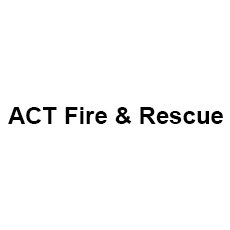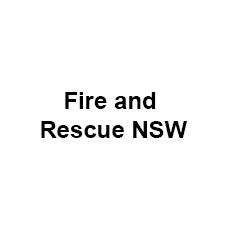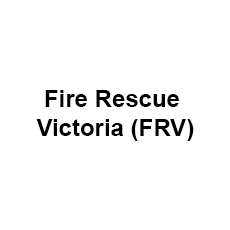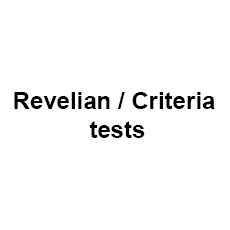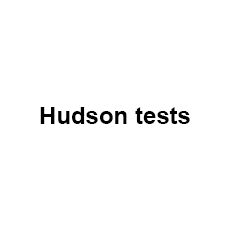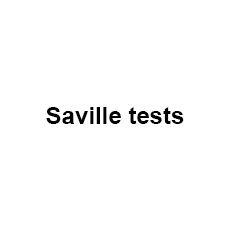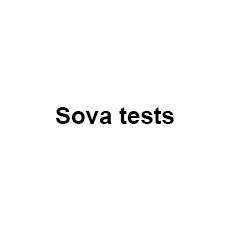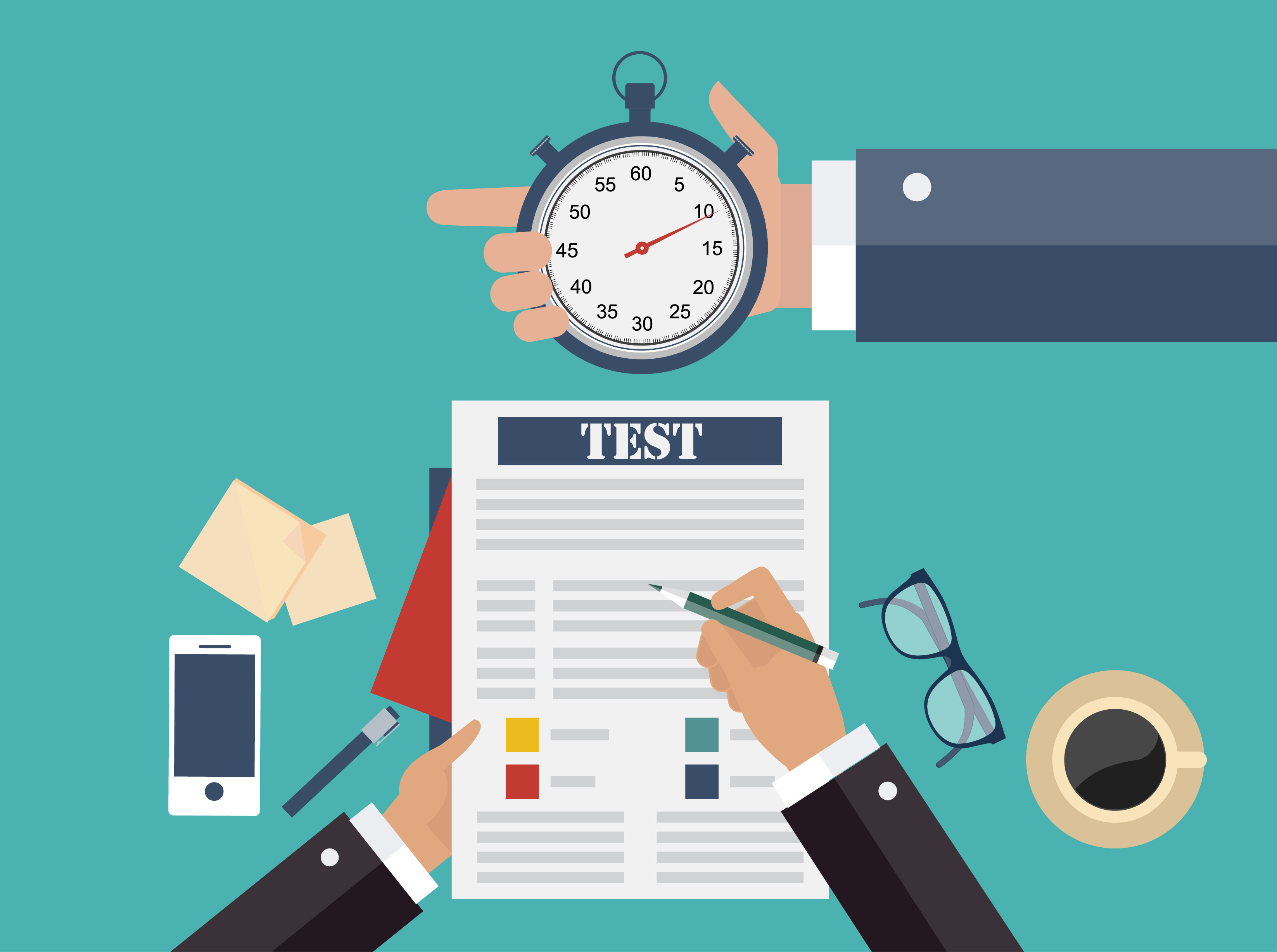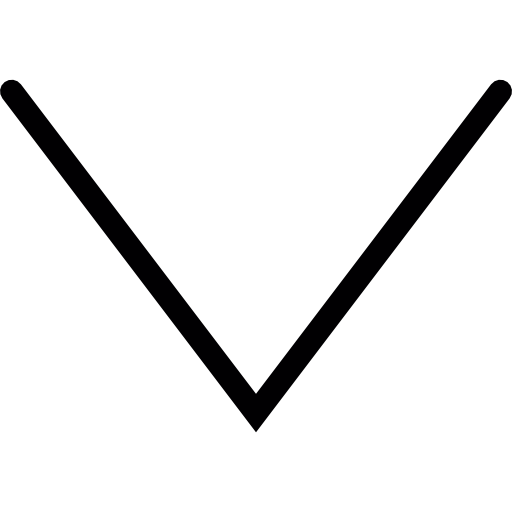Free aptitude tests, practice aptitude tests (job customised to Australia) including free aptitude test example questions 2024
Developed by senior Australian Psychometricians:
- Free aptitude tests measuring abstract skills.
- Free aptitude tests measuring logical skills.
- Free aptitude tests measuring diagrammatic skills.
- Free aptitude tests measuring verbal and deductive skills - style1, style 2, style 3 & style 4.
- Free aptitude tests measuring numerical skills - style1 & style 2.
- Free aptitude tests measuring emotional intelligence.
- Free aptitude tests measuring mechanical skills.
Please note: free aptitude tests on the internet are not job-specific, but your real tests will be. Give yourself the best chance at success and take our job-customised practice aptitude tests and preparation packages.
Important tip: aptitude test questions are customised to jobs:
From our experience we found that one of the most common mistakes that people have is to think that two aptitude tests with the same name will have the same test questions style. Aptitude test questions style CHANGES between jobs. It is important to know that while a large number of aptitude tests used by employers have the same generic name say abstract test or verbal test or numerical test etc, the test questions style can be very different between two aptitude tests with the same name.
You must ensure that you are not wasting precious time on preparing for the wrong style of test questions.
Free Australian-tailored aptitude test questions, aptitude tests practice & free aptitude test example questions customised to jobs:
Job-customised free practice aptitude tests developed by expert Australian psychometricians. Detailed answer explanations and free example aptitude test questions for popular jobs. Based on over 25 years of experience.
Aptitude test preparations and free aptitude test example questions for ACT Fire & Rescue
If you are are applying for a position with ACT Fire & Rescue, then part of your entrance exam will include a set of Hudson's timed aptitude tests. Please note that the timer in these tests is per question instead of the entire test. Click on the following link to take practice aptitude tests customised for ACT fire and rescue and review free example aptitude test questions for ACT fire and rescue:
Aptitude test preparations and free aptitude test example questions for Airservces Aviation Firefighter
If you are are applying for a position with Airservices Aviation firefighter & Rescue, then part of your entrance exam will include a set of aptitude tests to measure your ability to quickly identify errors and your span of attention as well as your personality profile. Click on the following link to take practice aptitude tests customised for Airservices Aviation Firefighter role and review free example aptitude test questions for Airservices Aviation firefighter:
Aptitude test practice and free aptitude test example questions for your game-based Job Opportunities Assessment (JOA) aptitude tests for ADF recruits - YOU Session
The job opportunities assessment (JOA) online test, for ADF recruits in their YOU session, is a set of game-based aptitude tests. Please note that when you apply to work for the defence force, you will be asked to complete a different set of tests which is part of the Australian Public Service (APS). The mini game based-aptitude tests for ADF recruits measure your abstract, verbal and numerical abilities. Click on the following link to take practice aptitude tests for JOA's ADF and review free example aptitude test questions in the JOA test for your YOU session:
Aptitude test practice and free aptitude test example questions for Australian Border Force tests
If you are applying for a position with Australian Border Force, you will be asked to complete, as part of your second phase a cognitive test which measures three components of aptitude tests - abstract, verbal and numerical reasoning. Following your aptitude screening phase you will be asked to participate in a special Assessment Centre that includes role-play with an actor and a behavioural interview. Following the Assessment Centre you will be asked to complete a clinical personality test to ensure that you do not have any mental issues. Click on the following link to take practice aptitude tests customised for Border Force and review some free example aptitude test questions for Border Force:
Aptitude test practice and free aptitude test example questions for Australian Federal Police (AFP) tests
The aptitude tests for Australian Federal Police include three types of aptitude tests - abstract aptitude test, verbal aptitude test and a numerical aptitude test. Federal Police also uses an emotional intelligence test. However, this test is a type of personality test. Each aptitude test is timed. Click on the following link to take practice aptitude tests customised to Australian Federal Police, prepare for the Australian Federal Police emotional intelligence test and review some free example aptitude test questions used by AFP:
Aptitude test practice and free aptitude test example questions for Australian Public Service (APS) tests (Federal and State)
If you are applying for a position with APS, you will be asked to complete a set of aptitude tests including a timed emotional intelligence test. It is important for you to know that APS uses serval aptitude test question styles. You must prepare for all aptitude test question styles. Click on the following link to take practice aptitude tests, timed emotional intelligence tests and personality tests customised for the Australian Public Service and to review some free example aptitude test question styles customised to the APS:
Aptitude test practice and free aptitude test example questions for Citi Group tests
If you received an invitation to complete some aptitude tests for a position with Citi Group, then you will need to complete a combination of aptitude tests - logical reasoning, verbal reasoning and numerical reasoning tests in addition to a personality test. Please click on the following link to take practice aptitude tests customised to Citi group and review some free example aptitude test questions used by Citi Group:
Aptitude test practice (game based) and free aptitude test example questions for Deloitte game tests
If you applied for a position with Deloitte or have already been one of the lucky ones who received an invitation to complete some aptitude or cognitive tests with Deloitte, then please be aware that Deloitte typically asks candidates to complete a mixture of game based aptitude tests. Click on the following link to review some free example aptitude test questions for Deloitte:
Aptitude test practice and free aptitude test example questions for Fire and Emergency Services WA (DFES) tests:
If you are are applying for a position with DFES, then part of your entrance exam will include a set of six mini aptitude and cognitive tests as well as a timed emotional intelligence test. Click on the following link to take practice aptitude tests and a timed emotional intelligence test customised for DFES and review free example aptitude test questions for DFES:
Aptitude test practice and free aptitude test example questions for Fire and Rescue NSW (FRNSW) tests
If you applied to a position with Fire and Rescue NSW, you will be asked to complete a timed Cognitive test which is an aptitude test that includes over 51 test questions and needs to be completed in 20 minutes. This aptitude test includes 3 types of aptitude test questions - abstract, verbal and numerical reasoning test questions. You will also be asked to complete a timed emotional intelligence test. Click on the following link to take practice aptitude tests and a timed emotional intelligence customised for Fire and Rescue NSW and review some free example aptitude test questions for the Cognitive test:
Aptitude test practice and free aptitude test example questions for the Written Selection Test (WST) Pearson VUE's Fire Rescue Victoria (FRV) tests
If you applied for a position with FRV, then in your initial screening you will be asked to complete a written selection test (WTS) by Pearson VUE. This test includes several timed aptitude and reasoning tests. These aptitude tests include abstract reasoning test, verbal reasoning test, mechanical reasoning test and the numerical reasoning test . Click on the following link to tale practice aptitude tests customised to WTS Pearson VUE's FRV and review some free example aptitude test questions tailored to Fire Rescue Victoria.
Aptitude test practice and free aptitude test example questions for Macquarie Group test
If you applied for a position with Macquarie or have already been one of the lucky ones who received an invitation to complete some aptitude tests for a position with the group, then please note that you will be asked to complete a set of aptitude tests which have a timer per question. The set of aptitude test typically includes logical reasoning, verbal Reasoning, and numerical reasoning tests. Click on the following link to take practice aptitude tests customised to Macquarie Bank and Group as well as review some free example aptitude test questions used by Macquarie:
Aptitude test preparations and free aptitude test example questions for Metro Trains
If you are are applying for a position with Metro Trains, then part of your entrance exam will include a set of aptitude timed tests. Aptitude tests will include an a logical reasoning test (which is also called an abstract test). The logical or abstract test is a Raven's test that includes a set of questions. each question has a 3 by 3 matrix of shapes and you will need to find the missing shape. You will also be asked to complete a verbal test and a work safety personality test. Please note that the timer in these tests is for the entire test. Click on the following link to take practice aptitude tests customised for Metro Trains and review free example aptitude test questions for Metro Trains:
Aptitude test practice and free aptitude test example questions for NAB tests
If you applied for a position with National Australia Bank (NAB) or have already been one of the lucky ones who received an invitation to complete some aptitude and personality tests customised to NAB, then please be aware that NAB typically asks candidates to complete a mixture of aptitude tests. Click on the following link to take practice aptitude tests customised to NAB and review some free example aptitude test questions tailored to NAB:
Aptitude test practice and free aptitude test example questions for NSW Ambulance tests
If you are applying to join NSW Ambulance, you will be required, to take an aptitude test as part of your phase 1 of your recruitment. NSW Ambulance will ask you to complete an aptitude test that includes abstract, verbal and numerical test questions. Please click on the following link to take aptitude tests practice tailored to NSW Ambulance tests:
Aptitude test practice and free example aptitude test questions for Qantas
If you applied for a position with Qantas or have already been one of the lucky ones who received an invitation to complete a set of aptitude tests measuring your abstract, verbal and numerical reasoning skills customised to Qantas. In addition, you will be asked to complete a personality test measuring critical personality attributes. It is important to be aware that Qantas has a special aptitude test questions style in their logical, verbal and numerical aptitude tests. Please click on the following link to take practice aptitude tests customised to Qantas and review some free example aptitude test questions tailored to Qantas:
Aptitude test practice and free aptitude test example questions for Queensland Fire and Emergency Services (QFES) tests
If you are applying to join Queensland Fire & Energy Services (QFES), you will be required as part of your application to take several aptitude tests. As part of your recruitment process, you will be asked to complete a timed mechanical test that includes a list of test questions that are based on mechanical principles, such as pullies and gears. You will also be asked to complete another set of timed aptitude tests that includes three types of test questions: abstract test questions, verbal test questions and numerical sequences questions. Please click on the following link to take practice aptitude tests customised to QFES and review free example aptitude test questions tailored to QFES:
Aptitude test practice and free aptitude test example questions for South Australia Police (SAPOL) tests
If you are applying to join SA Police (SAPOL) , you will be asked to complete a variety of aptitude tests as part of your entrance exam. In the screening phase, you will be asked to complete the Cognify test which includes several aptitude mini tests focusing on measuring your cognitive abilities. In additional you will be asked to complete a timed emotional intelligence test (Emotify test). Please click on the following link to take our practice aptitude tests customised to SA Police including practice tests for the Emotify test and review some free example aptitude test questions tailored to SA Police:
Aptitude test practice and free aptitude test example questions for Sydney Trains tests
If you are applying to join Sydney Train, you will be asked to complete a variety of aptitude tests as part of your recruitment process. You will first be asked to complete some short aptitude tests online. Then you will be asked to come to participate in an assessment centre in Burwood which would have more extensive abstract (type diagrammatic test questions) and verbal aptitude tests. Please click on the following link to take practice aptitude tests customised to Sydney Trains and review some example aptitude abstract and verbal tests tailored to Sydney Trains:
Popular aptitude test developers:
Even though most aptitude test developers use the same aptitude test names, they use very different aptitude test question styles to measure your aptitude or cognitive ability. This means that when you are asked to complete a numerical test or a logical reasoning test developed by one psychometric test developer, you are likely to find that the test question style is very different from the same type of test developed by a different psychometric test developer. Here are some examples of the difference in aptitude test question styles used by aptitude test developers.
Criteria tests (CCAT, Emotify, Cognify) - aptitude test practice and free aptitude test example questions:
Criteria aptitude tests include two very different types of tests. Criteria's Cognitive Ability Test (CCAT) is a timed aptitude test that includes 50 test questions and has a timer set for 20 minutes. The Criteria Cognitive Ability Test has a combination of aptitude test questions - abstract, verbal and numerical test questions. The verbal aptitude test questions in the CCAT are very short and are designed to measure your ability to use a logical structure to process verbal information. The numerical aptitude test questions in CCAT are also short and include number series and short problems that require you to use math formulas such as calculating an average, percentages and probability. Criteria's second type of aptitude test is the Cognify test, which is a set of mini aptitude tests or games designed to measure your aptitude or cognitive ability using game-based very short aptitude test questions. Click on the following link to take practice Criteria Cognitive Ability Test, Emotify, Cognify tests and review some Criteria's example aptitude test questions:
Hudson aptitude tests - aptitude test practice and free aptitude test example questions:
In addition to Hudson's verbal and numerical reasoning tests, Hudson uses a unique style of abstract aptitude test questions to measure your aptitude or cognitive ability. Click on the following link to take practice Hudson aptitude tests and review Hudson's example aptitude test questions:
TalentQ aptitude tests - aptitude test practice and free example aptitude test questions:
TalentQ aptitude tests include logical reasoning tests, verbal reasoning tests and numerical reasoning tests. TalentQ aptitude tests use a timer per question. Click on the following link to take practice TalentQ aptitude tests and review TalentQ's example aptitude test questions:
Saville aptitude tests - Saville aptitude test practice and example aptitude test questions:
Prepare for Saville aptitude tests. Saville aptitude tests include Saville abstract tests, Saville verbal aptitude tests, Saville numerical aptitude tests and Saville diagrammatic tests. Click on the following link to take practice Saville aptitude tests and review Saville example aptitude test questions:
Sova aptitude tests - Sova aptitude test practice and example aptitude test questions:
Get ready for Sova's aptitude tests . Sova aptitude tests include short number of abstract test questions, verbal aptitude test questions or numerical aptitude test questions. Each Sova aptitude test does not show a timer and you are not limited by time. However, your aptitude test score is calculated based on how many answers you got correct and how fast you completed all the aptitude test questions. Sova does not use diagrammatic aptitude tests. Click on the following link to take practice Sova aptitude tests and review Sova example aptitude test questions:
Popular aptitude tests
While there are many aptitude and psychometric tests used by employers, some aptitude tests are more preferred by employers. Here are some popular aptitude tests with links to practise and review aptitude test question examples for each test.
Criteria Cognitive Ability Test (CCAT) - test preparation and example aptitude test questions:
Criteria's Cognitive Ability Test is the preferred psychometric test used by employers in large companies needing to screen potential candidates. The Criteria Cognitive Ability Test is a timed test that includes 50 test questions and needs to be completed in 15 Minutes. The Criteria Cognitive Ability Test questions are grouped into 4 different sets of questions measuring 4 types of intelligence:
- A set of verbal test questions.
- A set of numerical test questions.
- A set of abstract test questions.
- A set of error checking test questions.
Click on the following link to prepare for Criteria Cognitive Ability Test (CCAT) and review some free Criteria Cognitive Ability Test question examples.
Criteria Cognitive Ability Test (CCAT) example questions
Emotify test - test preparation and example aptitude test questions:
The Emotify test was developed by Criteria as an aptitude test to measure your emotional intelligence using 3 distinctive aspects of your emotional intelligence.
- Ability to identify emotions in facial expressions
- Ability to identify people's emotions based on their behaviour
- Ability to identify effective strategies to manage emotions.
The Emotify test includes 3 parts:
Part 1 measures your ability to identify emotions in facial expressions. This part is timed and includes 30 questions. You only have 3 seconds to answer each question.
Part 2 measures your ability to identify people's emotional responses to day-to-day situations. This part, requires you to not only identify the correct emotional response but also the facial expression that demonstrates the correct emotion. This part includes 30 questions (each page includes 3 test questions). You only have 1 minute to complete each page with 3 test questions.
Part 3 measures your ability to identify an effective method to manage or regulate emotions based on work related scenarios. This part has 14 questions. This section is not timed.
Click on the following link to prepare for the Emotify test and review some free Emotify test question examples.
Emotify test example questions
Cognify test - test preparation and example aptitude test questions:
The Cognify test is a game-based type aptitude test developed by Criteria. This type of aptitude test includes 6 -7 timed mini tests. Each test is timed at around 3 to 5 minutes and looks like a basic video game.
The Cognify test moves away from the question/answer based style of standard psychometric tests. Instead, it uses game based tests to measure your abstract, verbal and numerical reasoning. This means that you no longer have a series of questions on the screen and no calculator or paper pad is necessary.
Click on the following link to prepare for the Cognify test and review some free Cognify test question examples.
Cognify game-based test example questions
MSCEIT test - test preparation and example aptitude test questions:
The MSCEIT test was developed by Mayer, Salovey and Caruso as a measurement of people’s emotional intelligence using 8 distinctive aspects of your emotional intelligence.
- Ability to identify emotions in facial expressions
- Ability to understand how emotions to facilitate behaviour in others
- Ability to identify people's emotions based on their behaviour
- Ability to understand how actions facilitate emotions in others and us
- Ability to identify types of emotions when looking at objects.
- Ability to associate emotions with colours, taste and descriptions.
- Ability to understand how to use emotions to facilitate interactions/relationships with others
- Ability to understand the structure of different emotions.
The MSCEIT test has 144 test questions. The test is not timed.
Your employers gets a full profile of your emotional intelligence with your position n comparison to others on each of the 8 dimensions and an overall score.
Click on the following link to prepare for the MSCEIT test and review some free MSCEIT test question examples.
MSCEIT emotional intelligence test example questions
Wanted to say thank you so much for your help with everything. I just got my offer and I’m so grateful for your support and guidance during every stage of this process! Thank you so so much, once again!.
S (applied for a role in Health Care)
------------------------------------------------------
I just received a message from FRV that I passed to the next round. I want to thank you for all the material you gave me to prepare for FRV.tests. Especially the maths, as it has been a while since school. Great material and great help. I will recommend your material to others.
M (applied for a role with FRV)
------------------------------------------------------
I want to thank you guys and the services that you provide. They (recruiter) don't provide me with results but it must've been pretty good if I managed to get to the interview processes. The psychometric test with Hudson looked daunting but with the 1 on 1 coaching and material provided helped me immensely. I received the invitation today about 4 hours ago. I am very pleased. The coach was very lovely and gave me great advice and study tips. Thank you
A (applied for a role with Australian Public Service)
--------------------------------------------------------------
I would like to thank the Institute of Psychometric Coaching and Roy for his coaching services provided to assist me with my Ambulance Victoria application; I am pleased to advise that I have done the Ambulance Victoria Psychometric assessment and passed. The coaching that Roy provided, along with the tips, was very beneficial, and I would highly recommend the Institute of Psychometric Coaching services.
S (applied for a job with Ambulance Victoria)
-------------------------------------------------------
After a long delay Macquarie have told me that i got the job. Getting through the tests ok was a key requirement and your help above and beyond was totally indispensable and so much appreciated. Thank you.
J (applied for a job with Macquarie)
-------------------------------------------------------
It was so good to do my aptitude tests with NAB after taking your preparation. It made it so much easier.
Nikki (applied for a promotion with NAB)
-------------------------------------------------------
Just wanted to pass on my thanks to you. You were a big help in preparing me for my aptitude Psyche tests with Rail Car Driver in Perth. I have passed and am now in the pool waiting impatiently for a training date. All the tests i did were a great help too. Many thanks, especially to Daniel!
Glenn (applied for a position with PTA)
-------------------------------------------------------
I bought ACER’s book for Vic Police but it did not help me. Your site was great as I could learn what i did wrong and how to answer the aptitude test questions correctly. Without your help I would have failed the ACER tests again.
Daniel (applied for a position with Victoria Police)
-------------------------------------------------------
In preparation for an aptitude assessment I sat this past Sunday which I received news I had been successful in progressing through to the QFES final phase of the recruitment process, (which is GREAT) I am very grateful for your services you provide.
A (applied for a position with QFES)
-------------------------------------------------------
The guidance I received from you about the aptitude test was exactly what I needed. I highly recommend.
David (applied for a role with Fire and Rescue NSW)
-------------------------------------------------------
I recently had a one-on-one coaching session with one of your senior psychometric test trainer. My time with trainer was worth every penny. He shared really clever strategies to prepare for the aptitude tests and helped me through some of the reasoning problems. I highly recommend this service and in particular the face-to-face coaching
Dustin (applied for a senior role with Bank of America)
-------------------------------------------------------
G’day! I wanted to give you guys some feedback on the aptitude practice tests. What an awesome preparation, I do not regret buying it for one second. Thanks to your courses and tests I scored very highly on the aptitude test and qualified for every single ADF officer position including the one I was aiming for (Air Force Pilot!). I even told the recruitment officer about it and she said she would share it with other candidates! No hesitations from me to recommend this to other people. 10/10.
J.J. (applied for a role with ADF)
Free aptitude test types and free aptitude test questions examples:
Free practice aptitude tests type abstract, logical, diagrammatic measuring your fluid intelligence:
It is very important to understand that while abstract, logical, inductive reasoning tests are names of tests measuring your conceptual reasoning skills, the style of test questions is very different across jobs. There is no one style of abstract reasoning test questions.
Our free abstract aptitude and reasoning tests have timers to mimic the real experience and are designed to help you understand and practise the style of abstract test questions used in your real abstract aptitude test you will sit for your prospective employer. In contrast to our paid abstract test practice test questions which are tailored to the level of difficulty and complexity required for a specific job, our free abstract aptitude test questions are targeted to a general job.
On completing each abstract aptitude practice test, you will immediately get a full test report that includes your total score in comparison to others who completed a similar test to yours, a list of correct and incorrect test answers, and detailed answer explanations for each question.
As mentioned before, our paid practice abstract aptitude tests are job specific. This means that the style of abstract test questions will be relevant to the job you are applying for. We have a pool of more than 600 questions for each job category. Once you completed a practice test, you will be given a full report including detailed answer explanations for all test questions. These are designed to ensure that you are fully ready to successfully complete your real abstract, logical or conceptual aptitude and reasoning test. To take our free abstract aptitude tests, please scroll to the bottom of the page. You can also view a list of example for the different styles of abstract test questions.
Abstract, logical, inductive and diagrammatic aptitude test questions come in various styles:
Free abstract (or logical) aptitude test example question 1:
Let's review the following free example abstract, logical and inductive aptitude test question. This abstract aptitude test question demonstrates one style of abstract aptitude test questions in which you have a horizontal list of shapes and your task is to identify the patterns or logical rules for the set of shapes to be able to predict the next or missing shape.
 What is the next shape?
What is the next shape?
To answer this abstract, logical and inductive aptitude and reasoning test question, we need to first identify the patterns and logical rules among the group of shapes in the test question. In this set of shapes, we can identify two logical rules or patterns moving left to right. The first is that all the inner shapes move one place anticlockwise each step. The second rule is that, at every step, the triangle alternates with a black square. At step five, there is a triangle at the top – therefore, at the next step, it will move anticlockwise into the left place and become a black square.

Free abstract (or logical) aptitude test example 2:
Another style of abstract aptitude test questions can be seen in the third free example abstract test question. This style of abstract aptitude test questions is used by companies such as TalentQ. In this style of abstract test questions you are shown a grid of 3 by 3 with 8 shapes plus one missing shape. Your task is to find the patterns or logical rules that apply to the shapes going from left to right or top to bottom. Then apply these patterns to find what is the missing shape that completes the patterns.
Let's examine the following abstract aptitude test example:

To solve this abstract aptitude test question, we need to find the logical rules that apply to the shapes going from left to right or top to bottom. We can see that each cell contains four arrowheads, some pointing left, and some pointing right. The last cell in each row is a combination of the first two arrowhead of the first cell, then the last two arrowhead of the middle cell. So, if we look at our top row, the first two arrowheads in first cell are < < and the last two arrowheads of middle cell are < >. If we combine them, we get < < < >.
Let's review a second example for a 3 by 3 matrix abstract question. In this question there are 8 shapes in a 3 by 3 table. The 9th shape is missing and your task is to find what it is based on the other shapes.

To solve this question, we need to find the logical rules that apply to the shapes going from left to right or top to bottom. We can see that in each cell in each row contains a black rectangle or box. The last cell in each row is a combination of the first two boxes of the first and second cells. So, if we look at our top row, the first two black boxes in first and middle cells are combined in the last cell to create a vertical black rectangle. Therefore, the missing shape is a full black box which is a combination of the two horizontal black rectangles.

Free abstract (logical) aptitude test example 3:
Another style of abstract question is questions in which you are given two lines of information (each line is made from 3 shapes); the top line is complete and the second incomplete. One or more rules are used when combining the shapes on the left and centre into the shape on the right. The task here is to use the upper line to identify the logical rule or rules, then use these rules to find the correct missing shape in the line below.
Let’s review the following example:

In this question, we have two lines of information made of shapes. When analysing the top line, we can conclude that the shapes on the left and centre are simply added together to make the shape on the right. Based on this logical rule, the missing shape in the line below is:

Another example of an abstract test is the diagrammatic test
Another style of abstract aptitude test questions is often called diagrammatic test. This style of test questions was designed to measure you ability to understand logical processes.Diagrammatic tests are a type of abstract test that is used by companies such as Hudson and we prepare you for it. Same as in the standard abstract test, these tests are non-verbal, which means that the questions don't include text.
There are several types of diagrammatic test questions. In the following diagrammatic test example question, you need to find what specific buttons do to a group of shapes in the question line based on several example lines in the Base Screen box. Once you find what the buttons do your then can find what the correct final figure is in the question line.
Let's examine the following diagrammatic test question example:

In this diagrammatic aptitude test question you need to find what buttons 1, 3 and 5 do.
From the first line, we see that the original figure (the three shapes to the left) goes through two transformations to form the figure on the right: (i) a change in the shapes (square to circle, or circle to square); and (ii) a change in colours (black to white, or vice versa). Two buttons are active in this line (1 and 2); however, we still don’t know which one changes the shape, or which one changes the colour.
The second line also shows a figure that swaps the colour of its three shapes, but there is no change in those shapes. This time, buttons 2, 3 and 4 are ‘active’ – so, button 2 (the only common ‘active’ button with line 1) must be the one that swaps colours; and we can now deduce that it is button 1 that changes (or toggles) the shapes. Buttons 3 and 4 must, then, be the ones that modify the horizontal and vertical lines, so we will need to refer to the third line to work out their individual functions.
In line three, because buttons 1 and 2 are ‘inactive’, we know that there will be no transformation of colour or shape. Buttons 4 and 5 are ‘active’, and we can see that the right figure has been made smaller and a vertical line removed. Line 3 shares only one active button with line 2 (i.e. button 4), and there is only one common transformation between these lines: the vertical line has been switched ‘on’ or ‘off’. Therefore, button 4 is a vertical line toggle switch, which means (from the previous line) that button 3 must be the on/off toggle for horizontal lines. Button 5, therefore, can only be for changing (or toggling) the size of the shapes in the figure (from big to small, or vice versa).
We can now summarise the button functions thus:
- Button 1 – toggles the shapes within the figure (squares to circles, and vice versa)
- Button 3 – toggles the horizontal lines on or off
- Button 5 – toggles the size (big or small) of the shapes within the figure.
Now, we can apply those button functions to our question line:
- Button 1 – will change the figure to a circle and a square.
- Button 3 – will add a horizontal line to all shapes in the figure.
- Button 5 – will toggle the shape sizes – the first from big to small, and the second from small to big.
The correct answer is:

Free diagrammatic aptitude test example question 2:
In this style of diagrammatic test, each question has a set of input and output figures and a number of operators/effects. The operations/effects' function is described in text and in illustrations. In each question there is one element missing - either the input figures or output figures or the operations.
Let's review the following free diagrammatic test question example:

The question is:

This diagrammatic test question requires you to identify the correct sequence of ‘input’ shapes based on the provided sequence of ‘output’ shapes. For this style of question, you are not provided the input sequence, rather, only the output sequence and an “Effect Operator”. These operators modify the input shapes in different ways to transform them into the output result. To solve this task, you must work backwards starting with the output sequence with reference to the operator and applying the effect in reverse to identify the correct input sequence.
In this question there is only one operator or effect. Based on the illustrated instruction panel, effect * changes the shapes and sizes of all white figures (from squares to circles or from circles to squares and from big to small or small to big). To reverse this effect, we need to change back all the white figures’ shapes and sizes. This means changing the first small, white square into a big, white circle and changing the second figure, which is a big, white circle into a small, white square. The sequence of figures after reversing this effect is: a big, white circle, followed by a small, white square and a small, black circle.
Remember: don't waste time practising free abstract, inductive and logical aptitude reasoning test questions styles that you will not have in your real abstract or inductive aptitude test. Take our job specific preparation package for your abstract test
Free aptitude tests practice measuring your verbal intelligence:
Our institute's free verbal or deductive aptitude reasoning tests are designed to help you understand and practise the types of questions used in the real verbal aptitude test you will sit for your prospective employer. In contrast to test questions tailored to the level of difficulty and complexity required for a specific job, our free verbal aptitude test questions are targeted to a general job.
On completing each free verbal aptitude test, you will immediately receive a full test report that includes your total score, a list of correct and incorrect test answers, and detailed explanations of the correct answers to each question.
Our Institute's paid practice verbal aptitude tests are job specific, with a pool of more than 1,200 questions for each job category including detailed answer explanations to ensure that you know how to tackle similar test questions in your real test. These are designed to ensure that you are fully equipped to successfully complete your real verbal aptitude test. To take our free verbal aptitude tests, please scroll to the bottom of the page. In the following section we included some examples for the different styles of verbal aptitude test questions.
Verbal and deductive aptitude test questions come in various styles:
The type of verbal aptitude reasoning test you will be asked to take depends the type of job you are applying for. Talk to our psychometric test trainers to learn more about this issue.
Free verbal aptitude test example question 1:
In this verbal aptitude example test question you have a passage to read and a set of 3-4 test questions to answer based on what you read in the passage. This style of verbal aptitude test question measures your ability to quickly and logically understand written information.
Let's review the following example verbal aptitude test question:
Dear Employee:
You have completed another year with the company, and you have continued to do a very good job overall. Your punctuality, professional demeanour, and attention to detail all continue to be at a very high level.
There are, however, a few aspects of your job performance that need improvement. First, as a regular daily occurrence at practices, you often fail to gather the balls and put them back on their racks in a timely enough fashion; our players want those balls back on the racks as soon as possible so that they can continue practicing without delays and without losing their rhythm. Second, water needs to be available to any player at any time and, occasionally, you have been slow to get water to the players as soon as they come off the court. Be sure to have the water ready for a player as soon as it is needed. Finally, you should always be available to immediately retrieve balls that bounce away from the court. Recently, after one player shot an air-ball, you didn't retrieve the ball until after free-throw shooting drills had begun. Please make a point to retrieve balls as quickly as possible.
Based on the passage is the following statement:
The employee has done a great job in the past year in terms of making water available.
True
False
or Can't say?
To answer this question, we need to read the passage. The report’s second point states that the employee needs to do a better job in water availability. Therefore, the correct answer is 'False'.
Free verbal aptitude test example question 2:
In this verbal aptitude test question style you are presented with a list of facts and a conclusion. Your task is to quickly identify which facts lead to the conclusion being correct.
Let's review the following test example:
Which two statements together prove that Tim has a red car?
A. Gil likes Tim's car colour
B. Tim likes fast cars
C. Gil has a fast car
D. Gil likes only red cars
E. Tim's car is not silver
To answer this verbal test question, we need to first examine what each statement says. If we take statement A ‘Gil likes Tim’s car colour’ and combine it with statement D ‘Gil likes only red cars’ then those alone prove that Tim has a red car. The logic is that if Gil likes only red cars (D) and he likes Tim’s car colour (A) then Tim’s car must be red.
Remember: don't waste time practising verbal or deductive aptitude reasoning test questions styles that you will not have in your real verbal or deductive aptitude test.
Free verbal aptitude test example question 3:
In this style of verbal test questions you will be given two words that are associated in some way (i.e. an analogy) and a list of options. You will then asked which of the options is most like the given word association.
Let’s look at the following example:
Cane is to Walk, as Eyeglasses are to …
A. Taste
B. Hear
C. Colour
D. Run
E. Observe
F. Sun
To solve this style of verbal aptitude test question you need to find the association between the first two words. The association between ‘cane’ and ‘walk’ is that the cane is an ancillary instrumentto assist someone to walk. Therefore, we need to find a word in the list with a similar association to ‘eyeglasses’. ‘Eyeglasses’ are an ancillary instrument to help someone ‘observe’, so this forms the same relationship as exists between ‘cane’ and ‘walk’.
Free verbal aptitude test example question 4:
In this verbal aptitude question style, which at face value looks similar to the first style we described, you have a passage to read and a set of 3 questions to answer. However, in this style the test questions are not only offering 3 answer options - true, false and can't say but they offer a list of statements as answer options.
Let's review the following verbal aptitude example question:
In epistemology, the Munchausen trilemma is a thought experiment used to demonstrate the impossibility of proving any truth, even in the fields of logic and mathematics. If it is asked how any knowledge is known to be true, proof may be provided. Yet that same question can be asked of the proof, and any subsequent proof. The Munchausen trilemma is that there are only three options when providing proof in this situation: (a) the circular argument, in which theory and proof support each other; (b) the regressive argument, in which each proof requires a further proof, ad infinitum; and (c) the axiomatic argument, which rests on accepted precepts. The trilemma, then, is the decision among the three equally unsatisfying options.
The name Munchausen Trilemma was coined in 1968 by the German philosopher Hans Albert in reference to a trilemma of “dogmatism versus infinite regress versus psychologism” used by Karl Popper. It is a reference to the problem of ‘bootstrapping’, based on the story of Baron Munchausen pulling himself and the horse on which he was sitting out of a mire by his own hair.
Based on the passage, wwhich one of the following does NOT follow based on the content of the text?
a. Karl Popper was a German philosopher.
b. There are three argument options when providing proof of whether any knowledge is true.
c. The axiomatic argument is one which rests on accepted precepts.
d. When each proof requires further proof ad infinitum, it is called a regressive argument.
e. Baron Munchausen rode a horse.
To answer this style of test questions you need to read the passage to find the correct answer. Nowhere in the text does it mention Karl Popper’s origins. The text only says that Hans Albert was a German philosopher. Therefore, the correct answer is that Karl Popper was a German philosopher.
Free verbal aptitude test example question 5:
In this verbal aptitude question style, you have a coded word and your task is to decipher the code in order to find how this code can be used for another word.
Let’s review the following example verbal aptitude test question:
In a certain code 'PICTURE' is written as 'SLFWXUH'. Using the same code, how would 'BRIDGE' be written?
EGDIRB
EULGJH
AQHCFD
FHEJSC
In order to solve this question your first challenge is to find how the coding works. To do this you need to use the example given of the original word and its coded version. In this case, the coding is that each letter is replaced with a letter that is 3 places higher in the alphabet. For example, B is replaced with E and R is replaced with U, I is replaced with L and so on. Therefore, BRIDGE becomes EULGJH.
Free aptitude tests practice measuring your ability to use numerical information to make decisions:
Our institute's free numerical aptitude reasoning tests are designed to help you understand and practise the style of numerical test questions used in numerical aptitude tests and in the one that you will sit for your prospective employer. In contrast to our paid numerical aptitude test questions that are tailored to your specific job, our free numerical aptitude test questions are targeted for a general job.
On completing each free or paid numerical aptitude test, you will immediately receive a full test report that includes your total score, a list of correct and incorrect test answers, and detailed explanations of the correct answers to each numerical aptitude test question.
Our paid practice numerical aptitude tests are job specific, with more than 1,700 test questions for each job category including detailed answer explanations to train your brain to quickly identify and apply the right framework for each question in your real test. These are designed to ensure you are fully equipped to successfully complete your real numerical aptitude test.
To take our free numerical aptitude tests, please scroll to the bottom of the page. You can also review some free examples for numerical aptitude test questions in the following section.
Numerical aptitude test questions come in various styles:
The style of numerical aptitude reasoning test you will be asked to take depends on the psychometric test provider chosen and the type of job you are applying for. Talk to our psychometric test trainers to learn more about this issue.
Free nuerical aptitude test example question 1: :
In this example you can see a numerical aptitude question style that focuses on presenting numerical information in tables and/or graphs. Then you are asked a question based on the information presented. This style of numerical aptitude test question measures your ability to process and identify trends in numerical data presented in a table or graph.

What is the ratio of the differences in actual sales to target sales in Thailand and Italy during the fourth quarter?
To answer this test numerical aptitude question, we need to review the information provided in the table. According to the table, Thailand’s fourth-quarter sales target was 550, but actual sales were: 205 + 105 + 260 = 570. This is a difference of 20 (570 – 550). Italy’s target was 600 sales, but actual sales were: 125 + 250 + 240 = 615. The difference here was 15 (615 – 600). Therefore, the Thailand to Italy ratio of differences is 20:15 = 4:3.
Free numerical aptitude test example question 2:
Let's review the following numerical aptitude test question. In this style of numerical aptitude test questions you are given a list of numbers displayed in triangles or long grids. Your task is to find what are the two missing numbers.

To answer this question you need to find the patterns or number sequences in this example. If we examine the numbers in the top line: 4, 12, 36... we can see that each consecutive number is product of multiplying the previous number by 3. For example, 4 x 3 = 12 and 12 x 3 = 36. Based on this the next number will be 36 x 3 = 108. The numbers at the bottom are created by subtracting 3 from the numbers above. For example, 4 - 3 = 1, 12 - 3 = 9, 36 - 3 = 33 and 108 - 3 = 105. The missing number at the bottom will be 108 x 3 = 324 then 324 - 3 = 321. So the missing numbers are 108 and 321.
Free numerical aptitude test example question 3:
In this style of numerical aptitude test questions you are given a list of numbers and a missing number. Your task is to find what is the value of the missing number
Let's review the following example::
1, 4, 9, 16, 25, 36, ?
What's the next number in this series?
This number series is based on the following sequence of numbers 1 squared, 2 squared, 3 squared, 4 squared, 5 squared, 6 squared. The next number is 7 squared (i.e. 49).
Here is another example which is more challenging:
0.74, 1.07, 1.4, 1.73, 2.06, ?
What is the next number in the series?
This is a question that also measures your ability to identify patterns in a group of numbers but uses decimal numbers. To solve this question, you need to identify the pattern - or patterns - that make up a specific number series. The simplest way is to analyse the first few numbers and see if you can find a connection between them. Then, check to see that this connection fits the other numbers in the series to form a pattern. When we analyse the first 3 numbers: 0.74, 1.07 and 1.4 we can see that each consecutive number is created by adding +0.33 to the previous number. For example, 0.74 plus 0.33 equals 1.07, 1.07 plus 0.33 equals 1.4. Then, we check the other numbers to confirm that this connection applies to all numbers. This means that we found a pattern. Based on this pattern, the missing number is 2.06 plus 0.33 which equals 2.39.
Free numerical aptitude test example question 4:
In this style of numerical test , you are gives a pair of numbers and a third number. Your task is to find a forth number that will pair with the third number to create the same association as in the first pair.
Sounds a bit complicated? It is not once you will review the following example:
1/3 is to 2/3 as 1/6 is to?
In this question, we need to find the relationship between a pair of presented numbers. Then, to find the number that shares the same relationship with the third number. In this example, the relationship between the first pair of numbers is that the first number (1/3) has doubled (2/3). Therefore, we need to double the first in the third number to go from 1/6 to 2/6. Then, we can simplify this fraction by dividing both top and bottom of the fraction by the same whole number and keeping the outcomes of top and bottom to be whole numbers. In this case, we can divide top and bottom of 2/6 by 2 making it 1/3.
Free numerical aptitude test example question 5:
In this style of numerical aptitude test questions you are given information and your task is to represent the information in numerical format to find to solve the problem.
Let's review the following example:
Steve has to figure out the number of animals to be placed in each of the small zoo's cages. He decided that the number of animals to be placed in each of the 6 cages will depend on the size of the cage in comparison to the other cages. One cage is four times the size of two of the zoo's cages and equal to the three other cages. What is the minimum number of animals in each cage?
This is a question that that requires you to represent verbal information in numerical format. Based on the information in the question, if X represents the number of animals in a small cage then 2X represents the number of animals in the bigger cage. Based on the information in the question, we can conclude that there are 4 big cages and 2 small ones. To find the smallest number of animals in each cage is 1 in the small cage and 2 in the bigger cage. The smallest number of animals in all 6 cages is 2+2+2+2+1+1= 10.
Free numerical aptitude test example question 6:
In this style of numerical aptitude test questions, you are given numbers and you need to simply show that you can use basic formulas to solve problems.
Let's check the following example:
What is the average of the following numbers: 9, 11, 13 and 15?
To answer this question, you need to understand how t calculate an average. An average is the sum of all items divided by the number of items. Therefore, to calculated the average of the numbers we first need to add all the numbers then divide by the number of items. The sum of all numbers is: 9 + 11+ 13 +15= 48. As we have 4 numbers in the list then the average equals to 48 / 4 = 12.
Or what is the answer to the following algebra problem:
(X + 4) – 2(-X + 4) = ?
To solve this question, we need to arrange or group the numbers and variables separately. Grouping the numbers and variables means to add up all the free numbers in one group and all the variables in another group. As this the exercise includes brackets then we always start first with them. In this case, we have in each bracket a free number and a variable, hence, we cannot do anything in the brackets to group the numbers inside. Next step is to open the brackets. We open brackets by multiplying the number or variable which is in front of the bracket by each number or variable inside the bracket and ensuring that the signs are correct. The first bracket has no number in front, then we can simply remove the brackets. The second bracket has the number -2 in front. Then we will need to multiply -2 by each number or variable inside the brackets and keep the correct sign. This means, -2 times -X and -2 times +4 = +2X – 8. The total exercise is, X + 4 + 2X -8. Now we group these figures into 3X – 4.
Free numerical aptitude test example question 7:
In this style of numerical aptitude test questions, you are given a pair of numbers. Either two fractions or one fraction and one decimal number. You are asked to find the relationship between this pair of numbers. Then, you are asked to find a new pair of numbers that will have the same relationship.
Let's review the following question:
1/8 is to 0.125 as 1/10 is to?
Answer Options:
0.15
0.12
0.11
0.105
0.1
0.01
To solve this question, we need to find the relationship between a pair of presented numbers. Then, to find the number that shares the same relationship with the third number. In this example, we have a fraction and a decimal number. To find the relationship, you must either have both numbers as decimal numbers or both as fractions. If you convert decimal to fraction or the other wat around, you will quickly find out that the first pair of numbers are identical in value. Taking this relationship into account, the second pair of numbers should then be 1/10 and 0.1, as 0.1 is the decimal format of 1/10.
Remember: don't waste time practising free numerical aptitude test questions styles that you will not have in your real numerical aptitude test.
Emotional Intelligence aptitude tests originate from the notion that emotional intelligence is an aptitude rather than a personality trait. Therefore, emotional intelligence aptitude tests act as a standard aptitude test. This means that the emotional intelligence aptitude test uses a timer and your score is based on how many correct answers you have in comparison to a norm group. One of the companies that adopted this approach to emotional intelligence is Criteria
What is an Emotional Intelligence aptitude test question?
An emotional intelligence aptitude tests typically has a timer for either the entire test or per aptitude test question. Typically, emotional intelligence aptitude tests have two test question styles:
The first style of an emotional intelligence aptitude test question includes a short scenario that describes a situation about one person or between two people. Then, you are asked to identify how each person is likely to feel in the scenario. You might be asked to only select the correct emotion or you might be asked to select the correct facial expression (the face that demonstrates the correct emotion). Typically, you will have 1 minute to answer.
The second style of an emotional intelligence aptitude test question includes a screenshot of a face and you are asked to identify what emotion the face is expressing. In this style of aptitude test questions you are only given a very short time to answer. Typically, between 3 and 5 seconds.
Let's review the following emotional intelligence aptitude test question example:

Is this Surprise?
Here you need to analyse the facial expression to identify whether the face expresses an emotion of surprise.
Let's review another emotional intelligence aptitude test question example:
This aptitude test example includes a short scenario an you are asked to identify the correct emotion the person in the scenario will feel. Please read the following short scenario:
Tess trained hard for this year’s 10 kilometre run but found out that her friend cheated in the same run. How is Tess likely to feel?
Here you need to analyse the information provided in the scenario to identify what emotion is Tess most likely to feel. Here you must understand what are the conditions that must happen to evoke each emotion. Then, to a analyse the situation to find which conditions you can identify in the situation which will lead you to find the most likely emotional response.
Another emotional intelligence aptitude test question example:
This emotional intelligence aptitude question, typically, includes a longer scenario and you are asked to identify the emotion in the scenario and demonstrate how best to manage this emotion.
For example, read the following scenario and answer the question at the end of it:
You are asked to join a new team. On your first day in the new team, you meet Helen, your new team leader. Helen invites you to her office and explains about the new team and your new role. Whilst talking, she accidentally spills a bottle of ink on your bag. Shocked at her own clumsiness, she apologises profusely, saying how awkward and ashamed she feels.
What should you say to make Helen feel more positive?
- Ignore the situation as if it did not happen.
- Let her know that she should not feel concerned, as it is only a minor thing.
- Use humour and let her know that this is a funny story of how they met.
- Inquire where the nearest toilet is so you can wash off the stain.
To answer this emotional intelligence aptitude test question, you first need to identify how you will feel in this situation then consider how you can manage this emotion (reduce ths intensity of the negative emotion).
The Challenge with emotional intelligence aptitude tests:
Many job applicants find the emotional intelligence aptitude tests very challenging due to the following reasons:
- The test timer is very short. This makes it very difficult for test takers to consider all the options before the time runs out.
- The content of emotional intelligence aptitude test questions is typically less familiar and very different from what people are used to.
- The emotional intelligence aptitude test questions require people to deal with things outside their comfort zone.
Free aptitude tests practice measuring your mechanical skills:
Our institute's free mechanical aptitude reasoning tests are designed to assist you understand and practise the style of mechanical aptitude test questions used in mechanical aptitude tests and in the real test you will sit for your prospective employer. In contrast to mechanical test questions tailored to a specific job, our free mechanical aptitude practice test questions are targeted for a general job.
On completing each test, you will immediately receive a full test report that includes your total score, a list of correct and incorrect test answers, and detailed explanations of the correct answers to each mechanical aptitude test question.
Our paid practice mechanical aptitude tests are job specific, with more than 800 mechanical test questions for each job category including detailed answer explanations. These are designed to ensure that you are fully equipped to successfully complete your real mechanical aptitude test. To take our free mechanical reasoning tests, please scroll to the bottom of the page.
Please read more about matching the style of aptitude test questions to the job you are applying for in your test information section and the Free psychometric guide.
Get job-custmised practice aptitude tests with detailed answer explanations:
- Practice aptitude tests with test questions style as in your real aptitude test.
- Detaied answer explanations.
- Your position in comparison to others who took a similar aptitude test.
- Personalised recommendations how to improve your aptitude test score.
- Online aptitude test courses to improve your test scores.
Get 1-on-1 coaching for improve your aptitude test score:
- Delivered by expert Australian psychometricians.
- Face-to-face in our offices or via Teams live.
- Experts’ assessment about how you process & solve aptitude test questions.
- Get practical personalised recommendations how to improve your speed and accuracy.
Free aptitude & cognitive tests practice with timers to mimic the stress:
Below you will be able to practice short timed free practice aptitude tests. Each practice test will focus on one style of aptitude test questions.
We also offer a detailed answer explanation at the end of each practice aptitude test. We would strongly advise that you read the detailed answer explanations to learn how to answer similar aptitude test questions in your real test.
Please note: Free aptitude tests on the internet never have the test question style tailored to the specific job you applied for, but the real tests are. To best prepare for your aptitude tests, please take our Institute's job-tailored preparation packages.


